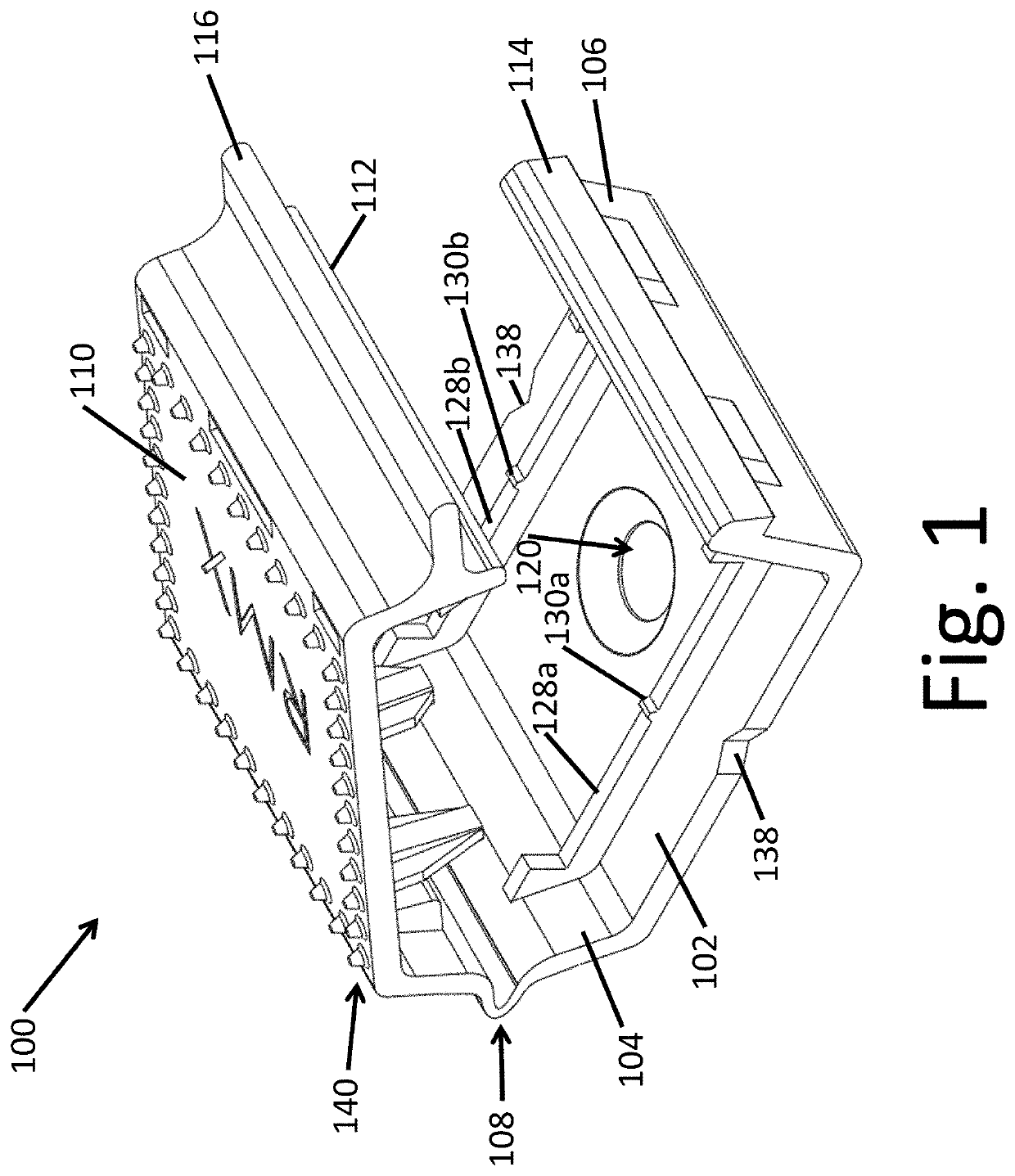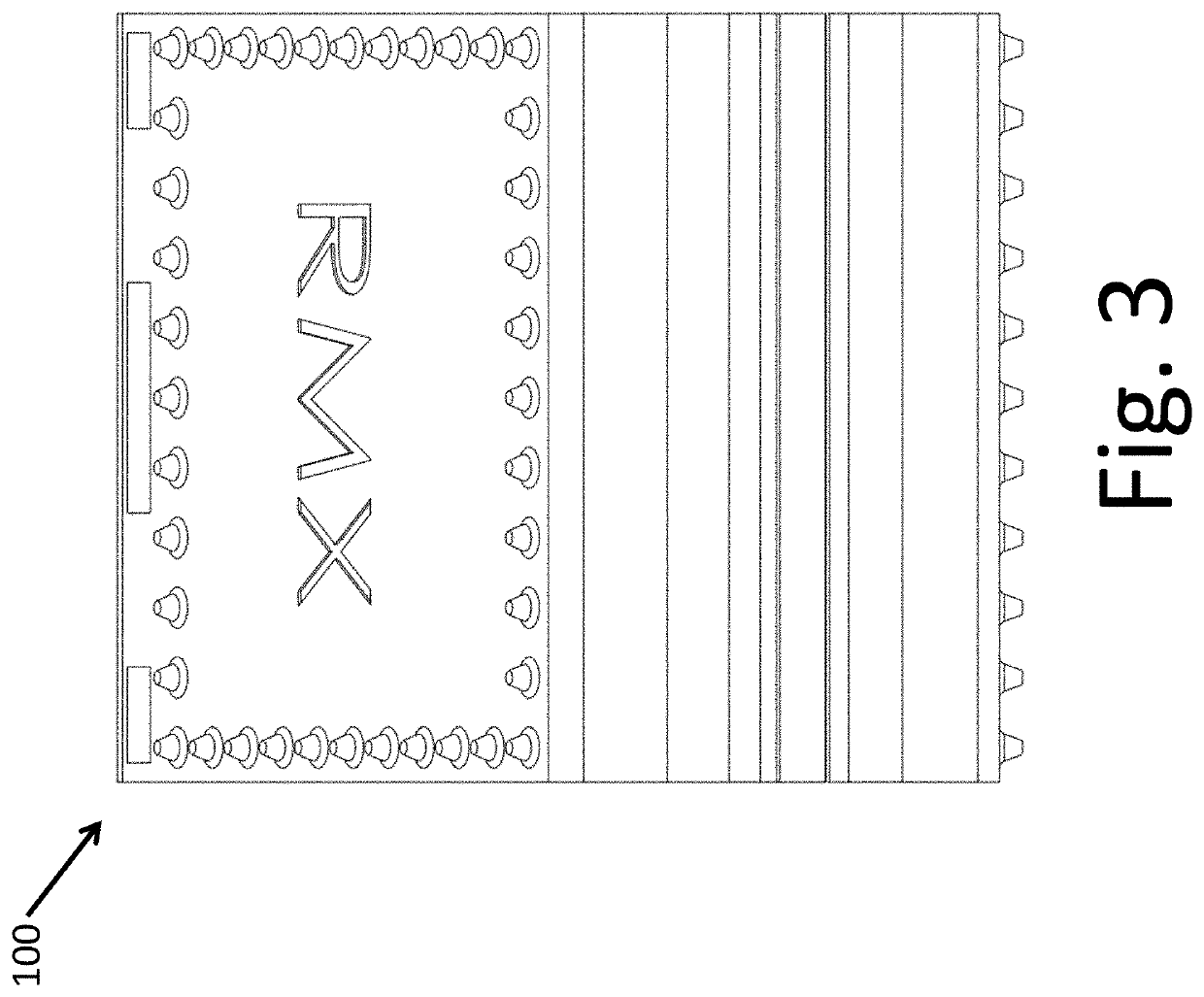Releasable holder for cables and conduit
a technology of releasable cables and conduits, applied in the direction of electrical appliances, etc., to achieve the effect of convenient opening and closing
- Summary
- Abstract
- Description
- Claims
- Application Information
AI Technical Summary
Benefits of technology
Problems solved by technology
Method used
Image
Examples
second embodiment
[0089]a holder 200 is shown in FIGS. 16-26. Similar features are labelled with reference numbers that are similar to those described above, but beginning with the numeral “2”, such as a base plate 202 and a top cover 210. A base set of impediments 246 are formed on base plate 202, jutting out from base plate 202 and generally facing top cover 210.
[0090]A hole 220 may be formed in base 202. Hole 220 may receive a fastener, such as a screw, nail, or rivet, to additionally connect base 202 to the underlying structure. In a finished installation, it is intended that holder 200 be firmly anchored to the underlying structure, and that holder 200 firmly grips any cable held in holder 200.
[0091]A top set of impediments 222 is formed in top cover 210, jutting out from top cover 210 and generally facing base plate 202. By forming opposing impediments, with some impediments 222 formed on top cover 210, and other impediments 246 formed on base plate 202, a cable placed on base plate 202 between...
third embodiment
[0094]a holder 300 is shown in FIGS. 27-30. Similar features are labelled with reference numbers that are similar to those described above, but beginning with the numeral “3”, such as a base plate 302 and a top cover 310. Holder 300 includes a top set of impediments 322, and a base set of impediments 346. Holder 300 is intended for use with MCC. One noticeable difference between holder 200 and holder 300 is that at least some of impediments 322 and 346 are frustoconical in shape.
fourth embodiment
[0095]a holder 400 is shown in FIGS. 31-38. Similar features are labelled with reference numbers that are similar to those described above, but beginning with the numeral “4”, such as a base plate 402 and a top cover 410. Holder 400 includes a top set of impediments 422, and a base set of impediments 444. Holder 400 is intended for use with PEX.
[0096]FIG. 30 shows overlapping lines, representing an unflexed, but inaccurate, position of latching lip 312 and corresponding lip 314. The overlap depicts the spring-like forces created between latching lip 312 and corresponding lip 314, resulting in a firm, secure latching mechanism. A more accurate representation of the third embodiment of FIG. 30 would look somewhat like what is shown in FIGS. 7 and 22.
[0097]FIGS. 37 and 38 shows similar overlapping lines, representing an unflexed, but inaccurate, position of latching lip 412 and corresponding lip 414. The overlap depicts the spring-like forces created between latching lip 412 and corres...
PUM
 Login to View More
Login to View More Abstract
Description
Claims
Application Information
 Login to View More
Login to View More - R&D
- Intellectual Property
- Life Sciences
- Materials
- Tech Scout
- Unparalleled Data Quality
- Higher Quality Content
- 60% Fewer Hallucinations
Browse by: Latest US Patents, China's latest patents, Technical Efficacy Thesaurus, Application Domain, Technology Topic, Popular Technical Reports.
© 2025 PatSnap. All rights reserved.Legal|Privacy policy|Modern Slavery Act Transparency Statement|Sitemap|About US| Contact US: help@patsnap.com



